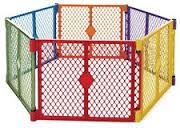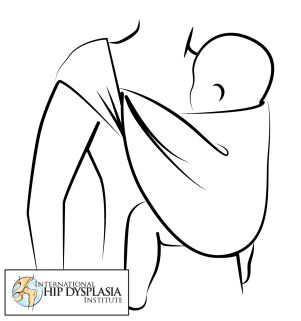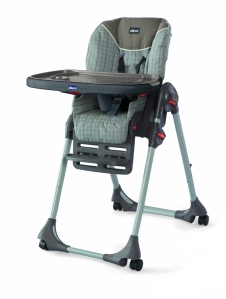There is a whole range of equipment available to parents to be used right from birth: carriers, bouncers, play mats, seating equipment, walkers, swings and so many more. We will look at each one to discuss their merits, disadvantages and recommended usage.
A word of caution: All equipment now comes in a variety of brands with “special” features that are meant to differentiate between brands. Also these days’ manufacturers try to make multi-functional so parents feel like they are getting their money’s worth. During our discussion we will focus of body position in this equipment and how that impacts development. Other frills are not considered as these are not exclusive to such equipment and the child can be exposed to this elsewhere.
The need of baby equipment has increased over the last 50-60 years. Nuclear families, both parents working outside the home, more structured lives for children from early years are just some of the things that created the need for equipment designed to keep babies safe. These changes started first in the western cultures but with globalization and similar societal conditions changing in India, we are starting to see the range of baby equipment in stores and homes across the country.
The pattern of motor milestones progression and its norms were established before baby equipment was extensively used. With the wide use of equipment, we are starting to see some changes in this pattern of development. Because this change is also influencing a lot of learning and life skills, I want to take a moment to do a quick review of a typical pattern of motor development.
While some baby equipment are helpful and do not cause bio-mechanical issues with development, some of these aren’t the best for development as they are advertised.
Let’s take a quick look at some of the helpful ones first.
1) Car Seat:
Car seats are an extremely important piece of baby equipment mainly for safety in the car. Typical infant car seats are supposed to be fitted to a sturdy base in the car, facing backwards till the baby is at least a year old. Car seats are also equipped with a 5-point harness unlike a carry cot or a rocker sold in India.
The typical position of the body is semi-reclined in the car seat. For infants, this is a good position because they get to see their surroundings and keeps them entertained while travelling. Keeping the baby in the car seat for prolonged duration like several hours a day is not recommended as it’s very restrictive and doesn’t allow for whole body exploration.
 A carry cot which looks like this picture, are widely substituted for car seats in India but this is a dangerous and mis-leading practice because carry cots are not securely attached to the car nor the baby inside the seat. While it might be a good way to carry an infant around in malls etc, baby-wearing might be the safer option.
A carry cot which looks like this picture, are widely substituted for car seats in India but this is a dangerous and mis-leading practice because carry cots are not securely attached to the car nor the baby inside the seat. While it might be a good way to carry an infant around in malls etc, baby-wearing might be the safer option.
2) Baby Carriers:
Baby wearing is the best investment in baby equipment in my opinion. You are able to carry on with your chores with baby wearing especially with a crying baby who also needs to be close to you. A good ergonomic carrier is a worthy and long term investment. There is a whole range of options available which we will cover in another blog post soon.
3) Play mats:
This is also a good piece of equipment if parents feel the urge to invest in something for a newborn. These mats are comfortable place for the baby to lay down on with a whole bunch of colorful toys to observe. Some mats come with crinkly surfaces so when the baby moves it makes a noise. Some have a small mirror and some have small pillows to be used for tummy time.
Again, the idea is to make tummy time or laying down fun for the child. This effect was achieved before play mats were invented by making a nice soft quilt for the baby and tying a rope low across the room where mobiles and other danglers would be attached for the baby to look at or play with.
These mats can be used for a few months till the baby starts to roll. As the baby starts needing more space, most often these mats are not longer used.
4) Playpen:
This is a crib like space where the baby can be safely sat down if you need a few minutes for yourself. Playpens are not as sturdy as the cribs and can be easily dismantled to make space in the house or moved to another room within the house. The height is non-adjustable and the sides are relatively high so the baby really cannot get out from there.
This is a safer option than jumperoos/walkers as the baby has the space to move in and out of lying, sitting and standing independently. It also has enough space to cruise and stand independently for a bit.
 Another way to safely contain a baby are these interlocking panels which you can use to create a play space. You can make this space as large as required and in later months, when the baby is too mobile, can be used to baby-proof the house as well.
Another way to safely contain a baby are these interlocking panels which you can use to create a play space. You can make this space as large as required and in later months, when the baby is too mobile, can be used to baby-proof the house as well.
5) Highchairs:
A safe sitting option, highchair or booster is a good investment too. Typically sitting up with support is recommended after 6 months and the main consideration to to make sure the feet are not dangling as it strains the hip. A highchair provides a 90-90 degree position with back support, hip and knees aligned and feet rested.
Not only does it provide the child with a good support for sitting, it allows the child to participate in mealtimes which a great bonus for developing good eating habits. Most of these are easy to clean and can be placed at the table itself. While this is a safe option, please remember not to leave your child strapped in the chair if you need to leave the room. An restricted baby may resist causing the chair to tip over.
We have seen some examples of reasonable equipment that have value in our modern lives. In the next post we’ll discuss some equipment that have no or negative impact on development.
Till then,
Happy Parenting!
Puja.
3/28/2015.









